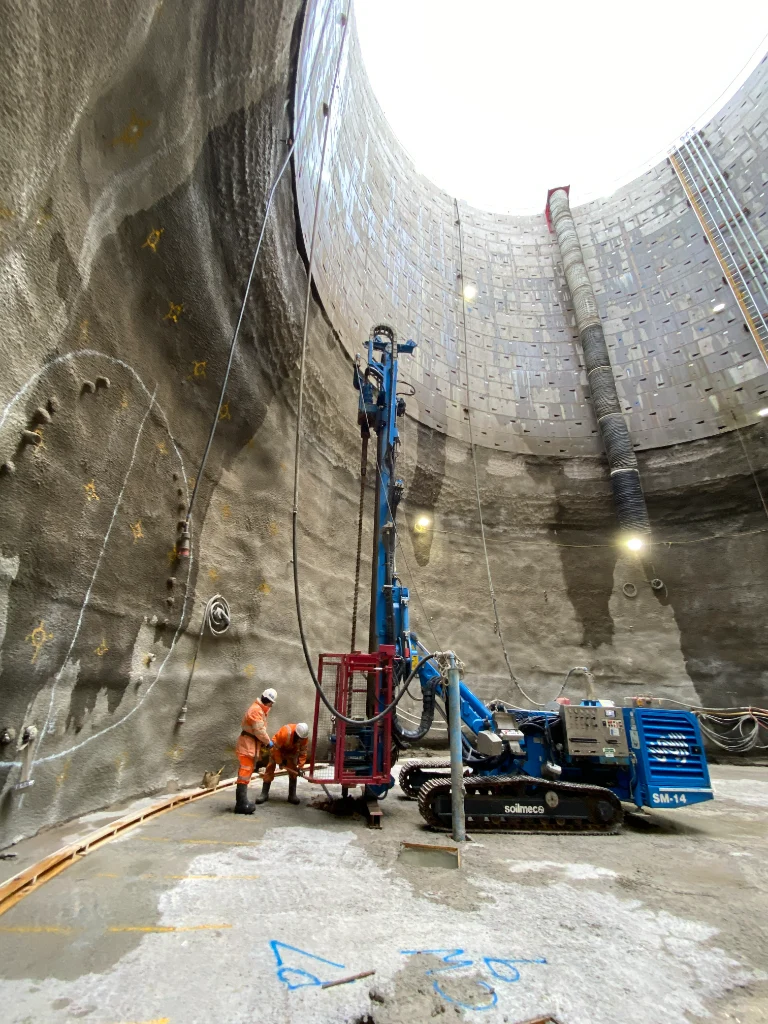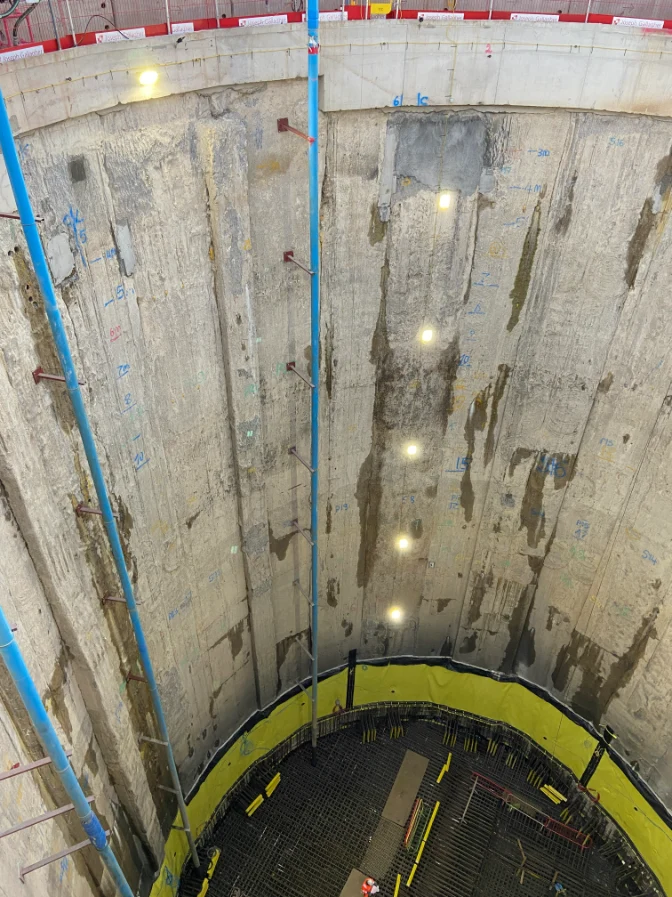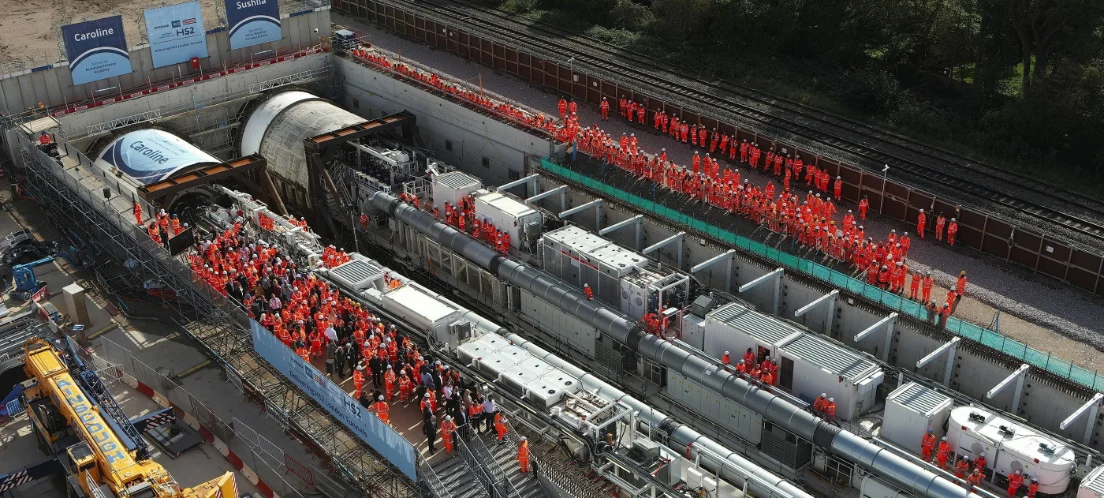The Northolt Tunnel is a key segment of the HS2 high-speed railway project, connecting West Ruislip to Old Oak Common via an 8.4-mile (13.5 km) tunnel. The western section of the tunnel spans 5 miles (8 km) from West Ruislip Portal (WRP) to the Green Park Way Ventilation Shaft (GPWVS) in Greenford, following the Chiltern Main Line. Along this route, multiple ventilation shafts, including South Ruislip Vent Shaft (SRVS) and Mandeville Road Vent Shaft (MRVS), are crucial for tunnel operations and safety.
WJ was engaged to provide dewatering solutions to support excavation and ensure groundwater pressures remained stable at the tunnel portal and ventilation shafts.



Given the challenging hydrogeological conditions along the tunnel alignment, WJ was tasked with designing and installing dewatering systems to ensure safe excavation. Key challenges included:
WJ delivered a tailored dewatering solution that included:
The two earth pressure balance tunnel boring machines (TBM’s) Sushila and Caroline, excavating the western section of the Northolt tunnels, will arrive in a specially designed reception chamber, or “can,” filled with foam concrete—an innovative solution developed to counter the site’s high groundwater pressure. The reception chambers allow the TBMs to maintain their pressure during arrival. Sealant is applied to the tunnel lining to prevent water ingress before the chamber is depressurised. Once complete, the TBMs are opened and lifted out of the ground.
The TBMs working on the Northolt Tunnel will be extracted via the two shafts at GPWVS, making the site a pivotal part of HS2’s construction journey.
WJ’s groundwater management solutions ensured safe and efficient excavation across multiple tunnel shafts, allowing TBMs Sushila and Caroline to be constructed and launched from WRP without delays. By integrating recharge wells, WJ also provided significant cost savings, preventing excessive sewer discharge fees and supporting sustainable water management.
At WJ, we provide more than just water management—we deliver tailored, site-specific solutions that support complex infrastructure projects. Our involvement in the HS2 Northolt Tunnel project highlights our ability to combine technical expertise, sustainability, and cost efficiency in high-profile engineering works.
WJ Group have completed many projects in the UK and globally. Click on the links below to learn more about what we do.
Are you ready to see what else our vision can bring to your projects? Speak to our team of groundwater experts today!